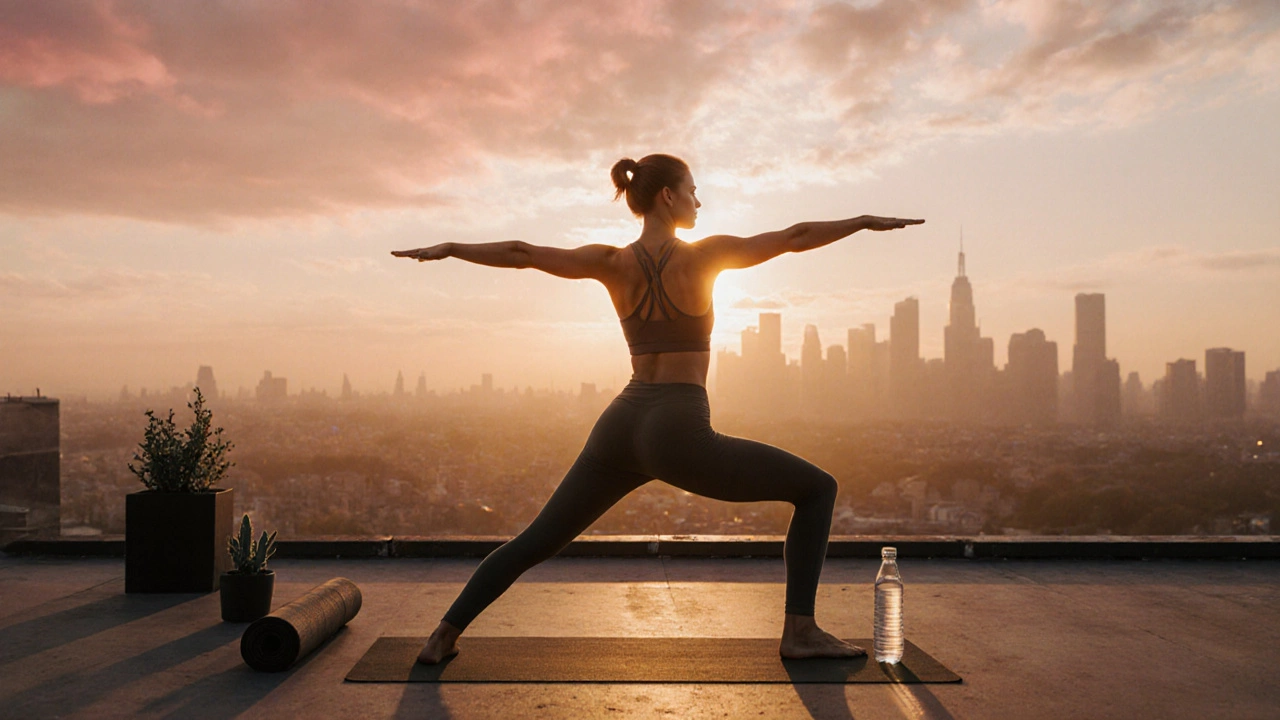When you hear Best Time of Day Yoga, the practice of scheduling yoga sessions at the part of the day that best matches your body’s natural rhythms and goals. Also known as optimal yoga timing, it lets you get more out of each pose and feel better faster.
Why does timing matter? Your circadian rhythm, the 24‑hour internal clock that controls hormone release, alertness, and recovery swings between high‑energy peaks and low‑energy troughs. If you line your practice up with a peak, you’ll notice stronger balances, deeper stretches, and a clearer mind. If you hit a trough, the same pose can feel shaky and your focus drifts. Best time of day yoga therefore influences energy levels, metabolism, and stress response. It also ties into yoga safety, guidelines that keep you injury‑free and make progress sustainable. When you practice when your body is ready, you’re less likely to push too hard, skip warm‑ups, or ignore alignment cues.
Morning yoga is a favorite for people who want to kick‑start their day. After a night’s rest, cortisol is naturally higher, which gives you a bit of extra drive for dynamic flows. A sunrise session can raise your heart rate just enough to wake up your metabolism, and the calm after a gentle flow often carries into work, helping you stay focused and less stressed. If weight loss is a goal, the post‑practice boost to calorie burn can add up over weeks. Evening yoga, on the other hand, aligns with the body’s winding‑down phase. As melatonin rises, you feel calmer, making it easier to sink into restorative poses, deep stretches, and breath work. This timing is great for improving sleep quality, lowering blood pressure, and releasing the tension that builds up during a hectic day. For flexibility goals, the muscles are warmer from daily movement, so you might reach deeper without straining. Both slots have their own set of benefits, and the best choice often depends on three practical factors: your daily schedule, your personal energy pattern, and the specific outcome you’re chasing. If you’re after a boost in productivity and a quick metabolism kick, try a 30‑minute sun salutation series before breakfast. If you need stress relief and better sleep, a gentle yin routine after dinner can be a game‑changer. The key is to experiment for a week or two, track how you feel, and let the results guide you.
Another angle many overlook is how the time you practice interacts with the golden rule of yoga – always honor your body’s limits. Whether you roll out the mat at 6 am or 8 pm, listening to your breath, keeping joints safe, and staying consistent are the real drivers of progress. That’s why many trainers recommend pairing a schedule with a simple safety checklist: start with joint‑friendly warm‑ups, keep alignment cues front‑and‑center, and finish with a cool‑down that respects your current flexibility level. If you’re a beginner, start with a short morning flow to build habit, then slide into a longer evening session once you feel more comfortable. Intermediate yogis might swap days – a vigorous Vinyasa on weekdays and a calming Restorative on weekends. Advanced practitioners often use timing to target specific goals: a pre‑run dynamic flow in the early hours and a deep stretch routine after a strength session in the afternoon. Beyond the clock, consider seasonal changes. Summer days bring more natural light, which can amplify the uplifting effect of a mid‑day practice. Winter’s shorter daylight may make an early‑morning session feel more grounding. Adjusting for daylight, temperature, and personal mood swings can fine‑tune the benefits you get from each session. All of this might sound like a lot to juggle, but the reality is simple: pick a slot, stick with it for a few weeks, notice the subtle shifts in energy, mood, and flexibility, then tweak as needed. Your body will tell you when it’s getting the most out of the practice, and that feedback loop is the most reliable guide you have.
Below you’ll find a curated mix of articles that dig deeper into each of these angles. From the science behind morning cortisol spikes to safe evening routines, from beginner pose breakdowns to advanced timing strategies, the collection is built to help you decide, test, and refine your own optimal yoga schedule. Dive in and see how the right timing can turn a good practice into a great one.

Discover the optimal time of day for yoga with science‑backed insights on morning, midday, and evening practices, plus a simple guide to pick the slot that fits your goals.
READ